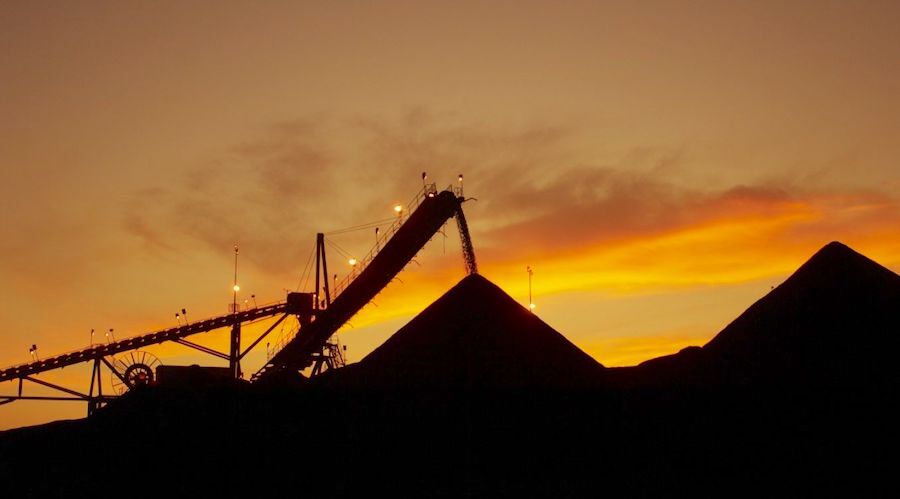WestJet pilots have issued a 72-hour strike notice to the company and the government, according to the union that represents them, and they warn the airline could be shut down right before the May long weekend.
The Air Line Pilots Association said in a news release late Monday that pilots plan to begin lawful job action early Friday morning, which the release said "could include grounding all aircraft and effectively shutting down operations."
“Flight disruptions are never an ideal outcome, especially given the tremendous support our guests have shown us, and we want to continue being a major contributor to our company’s success by helping WestJet realize its growth strategy,” Bernard Lewall, who heads the union's WestJet contingent, said in the news release.
“However, WestJet pilots will withdraw our services to secure a contract that will fix many of the airline’s labour problems and make it a career destination for pilots once again.”
The WestJet Group responded with a lockout notice, saying a work stoppage could occur as early as Friday at 3 a.m. MDT.
“The decision to issue a lockout notice, in response to the actions taken by the union today, was not one that was made lightly, and we sincerely regret the inconvenience and uncertainty this continues to cause for our guests,” WestJet Group CEO Alexis von Hoensbroech said in a statement.
The statement noted the lockout notice does not mean a work stoppage will occur, and that both parties remain at the bargaining table. But it said the company would "begin preparations to operate a reduced schedule" and warned it would be "a significant reduction from WestJet and Swoop’s current networks."
WestJet said guests impacted by flight delays or cancellations will be refunded or re-accommodated as applicable.
The union represents some 1,600 flight crew at WestJet and subsidiary Swoop, and had warned Friday that a walkout could come as early as this week as talks dragged on.
Lewall said last week that the workers' issues revolve around job protection, pay and scheduling, with some 340 pilots leaving the carrier over the past year and a half -- mostly to other airlines.
In a statement last week, the Calgary-based airline said its pilots are among the best paid in Canada, but that a contract on par with those recently secured by some U.S. pilot groups would be financially unworkable and put the company's future at risk.
The union said in its news release it could have filed the strike notice over the weekend, but in a bid to keep the airline operating, it agreed to extend negotiations.
The union noted that while progress was made on most non-cost items, both sides have been unable to reach an agreement.
This report by The Canadian Press was first published May 15, 2023.
WestJet customers holding their breath as
strike notice jeopardizes travel plans
The travel plans of WestJet customers are up in the air after its pilots' union issued a 72-hour strike notice Monday night.
The gambit by the Air Line Pilots Association kicked off a countdown to a flight crew walkout at 3 a.m. EDT on Friday morning, just ahead of the trip-laden May long weekend.
Vancouver resident Debby Raffard said she's been anxiously checking social media for updates about her May 22 flight to Hawaii, which she booked with WestJet in November.
"I am beyond upset," she said, expressing frustration with both sides.
"I don’t have that extra money to pay for another flight, nor do my travelling companions. So we are essentially screwed here," Raffard said, noting the group made a non-refundable condo booking.
WestJet subsidiary Swoop notified customers there is no impact on operations so far. But WestJet said Monday night it had started preparations to cut the flight schedules of both the flagship and budget carriers.
In the event of a delay or cancellation, customers will be "refunded or re-accommodated, as applicable," the airline said Monday night.
Consumers with travel insurance — via their credit card or purchased from the carrier — could potentially get that reimbursement sooner, said Natasha Macmillan, director of everyday banking at Ratehub.ca, an online comparison platform for financial products. But airlines are required to offer refunds and rebookings, including through rival airlines, in the event of delays and cancellations caused by a labour disruption, she said.
Nonetheless, experts said a strike could taint passengers' view of a sector already rife with customer dissatisfaction after hundreds of thousands of flight cancellations over the past three years that have prompted tens of thousands of complaints around compensation to the transport regulator.
"If WestJet was to go on strike because of an issue with pilots, it will be of course detrimental to the industry overall, (and) to the travellers," said Jacques Roy, a professor of transport management at HEC Montreal business school.
"It's a market where the supply is less than demand. So basically, they are in the driver's seat," he said of the 1,850 WestJet pilots gearing up to strike amid a global pilot shortage.
The pilots, who unionized in 2017, are negotiating with privately-held WestJet after Onex Corp. bought the publicly traded airline in 2019. Privatization has meant the loss of some potential perks for pilots, said Roy.
"The pilots with WestJet used to brag that though they were paid less than Air Canada's pilots, they would still make more money because they could buy WestJet shares at half the price," Roy said, adding that labour issues were once "nonexistent."
Now, union and management are playing hardball under pressure from inflation, labour shortages and rising U.S. pilot wages on the one hand and a pandemic-battered aviation sector on the other. Bargaining between WestJet and pilots has never gone as far as a strike notice — until this week — the union said.
If it drags on, the deadlock could tarnish the airline's reputation and affect its bookings, said Karl Moore, an associate professor with the Desautels Faculty of Management at McGill University.
"There's that feisty Western approach, more of a sense of humour than Air Canada," he said. "I think overall WestJet has a pretty positive image among Canadians. Now, this might hurt them a bit."
In 1998, a 13-day pilot strike at Air Canada grounded 650 flights and 60,000 passengers daily, costing the company $133 million.
Flair, an Alberta-based ultra-low-cost carrier, seized on the uncertainty around the current standoff to try to nab passengers from its rival, announcing extra flights between Vancouver, Calgary and Edmonton starting Friday.
"The airline is creating contingency plans to service more destinations with flight frequencies should the WestJet pilots’ strike continue for an extended period," it said in a statement.
Bernard Lewall, who heads the union's WestJet contingent, said the workers' issues revolve around pay, job security and scheduling, with some 340 pilots leaving the carrier over the past year and a half — mostly for other airlines.
"After nine months of negotiating, management still fails to understand today’s labour market conditions, leading to a mass exodus of our pilots in search of better work opportunities, and more will follow if this agreement does not meet our pilots’ needs,” Lewall said in a statement Monday night.
Last week, Calgary-based WestJet said its pilots are among the best paid in Canada, but that a contract on par with those recently secured by some U.S. pilot groups would be financially unworkable and could put the company's future at risk.
Negotiations are ongoing from 7 a.m. to midnight at a hotel near Toronto's Pearson airport, even after the strike notice — and WestJet's immediate response of a lockout notice.
"The decision to issue a lockout notice, in response to the actions taken by the union today, was not one that was made lightly, and we sincerely regret the inconvenience and uncertainty this continues to cause for our guests,'' WestJet CEO Alexis von Hoensbroech said in a statement shortly before midnight Monday.



